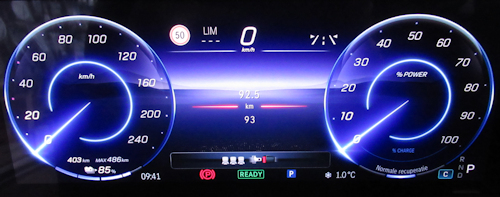It is normally not necessary for the driver of a car, but an installer of equipment in cars sometimes has to switch on the ignition, for example when built-in equipment needs to be configured or when matching a BCI. How do you actually do that in an EV?
In most cars with a petrol engine and a conventional ignition switch, this can be done simply by turning the ignition key to the IGNITION position. Such an ignition switch usually has four positions: OFF, ACCESSORY, IGNITION and START. When you put the key in the IGNITION position, you will see various lights/symbols (including battery and oil) in the instrument panel burning and then you know that the ignition is on. You can also choose to start the engine (key jumps back to IGNITION), but that is not always desirable at the installation location given the exhaust fumes.

If you are dealing with a start button instead of a conventional ignition switch in fossil or hybrid cars, the IGNITION position will be less accessible. You see differences between car brands in that area, and no common ‘standard’ seems to have been developed. Some cars turn the ignition on when you press the start button once without your foot on the clutch and/or brake pedal, while others require you to press the start button five times in a row to turn the ignition on. Sometimes it is also a condition that the park position (P) is engaged on cars with an automatic transmission. Well, an EV does not have an (automatic) gearbox anyway, but there is usually no longer a IGNITION position. An EV usually only has two positions: OFF or DRIVE. In DRIVE mode, the car is essentially ready to drive off. If you were to put it in D(rive) or R(everse) and release the brake, it would drive. Some car functions are already activated when the driver approaches the car with the car key, but the really essential functions are only active in the DRIVE mode. There are EVs where the text ‘READY’ lights up in the instrument panel in the DRIVE mode. You can see an example in the image below. But not all car manufacturers opt for this.
So if you want to configure equipment or match a BCI in an EV and it is necessary to switch on the ignition, first determine what the DRIVING mode looks like on the instrument panel of that EV. If that is clear, continue configuring the equipment.
The ‘switched power supply’ has already been discussed in one of our publications. If you want to read it again, click on this link.